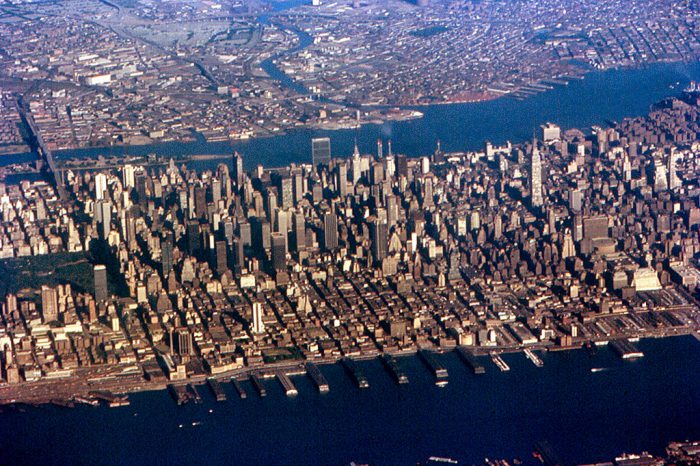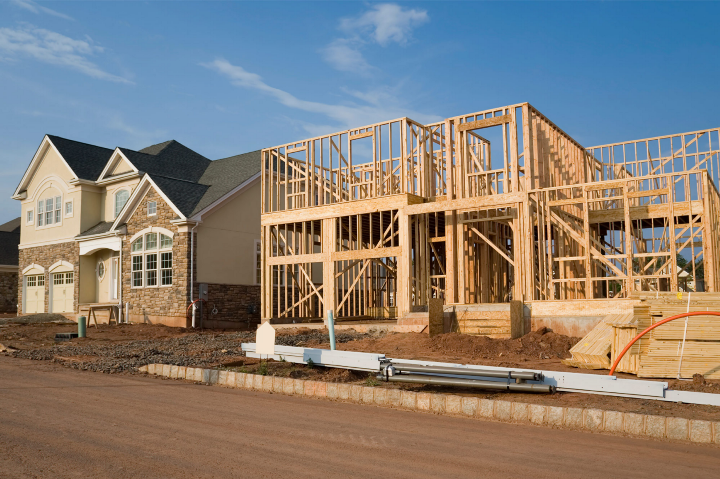Physical Address
304 North Cardinal St.
Dorchester Center, MA 02124
Physical Address
304 North Cardinal St.
Dorchester Center, MA 02124
(cross-posted from planetizen.com) I have argued numerous times on Planetizen that increased housing supply would reduce rents. I recently read one counterargument that I had not fully addressed before: the claim that no amount of new housing will ever bring down urban rents because housing in high-cost, high-wage cities is expensive to build.* This argument rests on two assumptions: (1) that construction costs are the primary reason some cities are more expensive than others, and (2) if new housing is expensive, the median citywide rent will be equally expensive. I find neither assumption to be persuasive. Admittedly, expensive cities do tend to have higher construction costs than more affordable costs—but this gap is far more modest than the gap in housing costs between high-cost and low-cost cities. For example, a study by the design firm EVStudio showed that the construction costs for a small apartment building in New York City were only about 30 percent higher than the costs of a similar building in Kansas City ($232 per square feet in New York, $181 in Kansas City). But rents in New York are far more than 30 percent higher; I pay about $5 per square foot for my Manhattan apartment, but paid just over $1 per square foot for a roughly comparable apartment in Kansas City (i.e., a doorman building in a fashionable intown neighborhood). Similarly, the Lincoln Institute’s land price database reveals that regional differences in construction costs lag behind differences in land costs: for example, construction costs in San Francisco are only about 60 percent higher than construction costs in Kansas City, but the median San Francisco-area house costs seven times as much due to differences in land costs. Thus, construction costs are not the main reason some cities are more expensive than others.** Moreover, the suggestion that high construction costs for new buildings mean high […]
Coauthored with Emily Hamilton Last week, the autonomous vehicle company Waymo began testing cars in Chandler, AZ with no employees sitting in the front seat. While Waymo is busy creating systems of vehicle-mounted sensors that allow cars to safely navigate existing urban infrastructure and obstacles, some cities are pursuing plans to build “smart streets” that broadcast information about roads and potential hazards to autonomous vehicles. The American history of auto-centric infrastructure demonstrates that building specific infrastructure for autonomous vehicles may have long-lasting negative consequences. Waymo’s cars rely on both detailed maps and car-mounted lidar sensors that “see” the world around them in order to follow their route and to to avoid collisions. While the current technology is very safe, car-mounted sensors remain imperfect. As Tim Lee points out, there are reasons that Waymo launched in Chandler: its sunny weather, wide streets and minimal pedestrian traffic. Fully autonomous vehicles will need even better sensors than those that are currently available to drive safely in snowy conditions and in places with less regular streets that may confuse a vehicle’s sensors. Some analysts have advocated for publicly-provided smart streets and smart intersections that could limit the need for vehicle-mounted sensors and, perhaps, speed the adoption of autonomous vehicles. My colleague Brent Skorup has this view: Car-mounted sensors often confused by road materials (a shift from dirt to gravel or asphalt), reflective buildings, bridges, or even the weather. Roadside sensors not only mitigate these problems, but also reduce the computing load on car-mounted systems, because the vehicles have to make fewer snap decisions. There’s a way to get this information to vehicles quickly and accurately. Just as lawmakers and city planners started laying asphalt, installing streetlights, posting speed limits, and zoning property to accommodate Henry Ford’s cars, we need to design roads and infrastructure […]
My last post, on urban geographic constraints and housing prices, led to an interesting discussion thread. The most common counter argument was that because dense cities are usually more expensive, density must cause high cost. But if this was true, cities would become cheaper as they became less dense. Most American urbanized areas have become less dense, not more, over time due to suburban sprawl. Even where city populations have grown, much of that growth has been in areas that where undeveloped a century ago. Thus, the developed part of even growing cities were, I suspect, more dense in 1917 than than they are today: for example, Manhattan’s population peaked at 2.3 million in 1910, about 40 percent more than its current population. So rents should have come down. Did they? Apparently not. The Census date has statewide data showing that rents rose pretty much everywhere in real terms over the late 20th century. In the District of Columbia, real rents increased from $346 to $612 in real dollars between 1950 and 1990, even as the city was losing population and the region was de-densifying. If Washington is typical, it appears that lower density and higher rent went hand-in-hand.

One common argument against building new urban housing is that cities are geographically constrained by their natural and political boundaries, and thus can never build enough housing to bring prices down. This claim rests on a variety of false assumptions. The first false assumption is that the amount of land in a city limits the amount of housing in that city. If you assume that every bit of residential land must be occupied by single-family houses on 1/5 of an acre on land, I suppose this assumption makes sense. But in reality, you can always put more people on a block of land. Where today you have big houses, tomorrow you could have small houses. Where today you have small houses, tomorrow you could have small apartment buildings. Where today you have small apartment buildings, tomorrow you could have large apartment buildings. Even in midtown Manhattan, where I live, there are lots to two-to-four story buildings that could be knocked down and replaced with larger buildings. If Manhattan had the density of Mongkok (a popular Hong Kong neighborhood with 340,000 people per square mile), it could accommodate almost 7 million people- about 80 percent of the city of New York’s population.* And if Manhattan had enough housing to accommodate Mongkok-type densities, a whole lot of housing units (either outer borough units or older Manhattan units) would become vacant, causing rents to plunge. The second assumption is that a city’s built-up core is its entire housing market. But this is wrong, because Manhattan landlords compete not just with each other, but with landlords in the outer boroughs and the suburbs. So if enough housing units were, for example, built in New Jersey, demand for housing in Manhattan would eventually decrease. *A common counteragument is that demolishing and rebuilding housing […]
Urbanists have increasingly turned to state-level preemption as a tool for reducing the barriers to new housing supply, recognizing the improved incentives for land-use policy relative to the local level. In a piece for the Atlantic Cities, Nolan sums up the potential for preemption to address current inefficiencies in urban policy. In addition to being a pragmatic tool to increase the supply of housing where it’s needed most, state-level preemption of local land-use rules is grounded in the American system of federalism that relies on higher levels of government setting limits on the extent to which lower levels of government can legislate or regulate away individuals’ rights. As legal scholar Michael Greve explains in The Upside-Down Constitution, American government is designed to rely on the threat of residents (and their tax base) leaving jurisdictions that enforce exploitative policies. When residents are free to enter and exit jurisdictions, the places that provide the policy environment, business opportunities, and quality of life can expect to gain residents at the expense of those that don’t. The opportunity for residents to “vote with their feet” by choosing to live and work in the places where they can best pursue their own version of the good life is essential to the American system of competitive federalism. When jurisdictions must compete with each other for residents and wealth, they tend to enact policies that support broad-based prosperity. Absent this competitive pressure, policymakers are more likely to implement policies that privilege special interests because they face a diminished threat of their tax base leaving the jurisdiction. Preemption can play an important role in supporting competitive federalism as opposed what Greve calls cartel federalism — when special interests and policymakers benefit at others’ expense. For example, with the 14th Amendment, the federal government restricted the potential for state governments to […]

Our tax code favors suburbia. Homeownership, greenfield development, and sprawl receive preferential tax treatment, and the market responds to incentives built into the code. As a result, a disproportionate amount of capital flows to those investments. In many cases, it has been an unintentional side effect of pursuing other goals. The combined effect is that our tax system plays a huge role in shaping our communities. Its influence is an important factor to understanding how residential design in the US became what it is today.
Before there was a Market Urbanism blog, I posted short thoughts on the Congress for New Urbanism group blog. I am in the process of recovering as many of the posts as possible through the Internet Archive (archive.org). My 2015 posts are here. I hope to gradually recover the earlier posts as well.

The government exercises tremendous power over residential design in the US. Its influence is nearly invisible, because it works through complex financing programs, insurance incentives, and secondary markets. These mechanisms go unnoticed, but their effect is hard to miss—they remade the United States into a nation of sprawling suburbs. This is the second post in a series about government policies that encouraged suburban growth in the US. You can find the first post here. What image springs to mind when you picture “federally subsidized housing”? Most people imagine a low-income public housing tower, a homeless shelter, or a shoddy apartment building. Nope—suburban homeowners are the single biggest recipient of housing subsidies. As a result, suburbs dominate housing in the United States. For decades, federal finance regulations incentivized single-family homes through three key mechanisms: Insurance, National mortgage markets, and New standards for debt structuring The housing market hides these details from the typical home buyer. As a result, most people are unaware of these subsidies. But their effects are striking—they determined the location and shape of development across America for generations. A New Deal to restore the housing industry Debt has a negative connotation these days. Credit cards, student loans, and auto loans are the anchors that keep many Americans in debt for most of their life. Meanwhile, we view mortgages very differently—they are seen as an investment, a symbol of adulthood, and a sign of financial stability. This was not always the case. In the early 1900s, mortgages were just like any other kind of debt. Nowadays payments are spread out over decades, but back then they came due all at once after a few years. Most people didn’t have enough cash at the end of the term. It was standard to pay back some and negotiate a new loan for […]
One long-forgotten housing option is residential hotels; a century ago, most renters lived in hotels and shared space with short-term tenants. I just read a book, Living Downtown, about the rise and fall of residential hotels. Rather than discuss them in detail I refer you to my amazon.com review. But here are two general thoughts: one reason Airbnb has been controversial is because it mixes long-term and short-term tenants. But in the first half of the 20th century this was a common mixture. Until the 1920s, residential hotels were so unregulated that they included a wide range of places, from luxury hotels to vile flophouses where there was not even a mattress to sleep on. But this mixture allowed even tramps to avoid sleeping on streets as they do now.

This is the first article of a five-part series on suburbia in the United States. In primary school, one of my friends lived in a duplex. This fact blew my mind. To my inexperienced 7-year-old mind, a duplex barely registered as a house. Her family shared a driveway with their neighbors, and their yard was tiny. It was the first house I’d ever seen that shared a wall with its neighbors. I’d seen apartments of course, but in my mind those were temporary, for people who who were saving up to buy a “real” home. I couldn’t understand that some people might actually prefer to live in something besides a private home, because I’d never come across it before. Median income in American cities tends to rise at about 8 percent per mile as one moves away from the business district. My mental model of the world was pretty typical for an American child brought up in a single-family home. It’s easy to see why—US residential development is dominated by suburbs, and home ownership is touted as the ultimate symbol of prosperity. Other types of dwellings tend to be for young people starting out in life or low income households unable to afford a place of their own. The popular image of the American Dream includes a white picket fence and a car, not an apartment and a subway pass. This is in stark contrast with most other countries. The French word for suburb is banlieue, and it has come to connote poverty and social isolation, because that is where immigrants and the poor tend to live. They’ve been known as “red suburbs” because of their tendency to vote Communist. Meanwhile, the wealthy live in the city center. In South Africa, the inner city is reserved for the privileged white […]